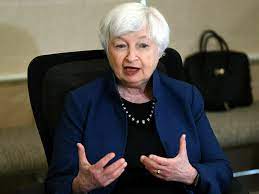It is imperative to approach China with strategic lucidity
The Galwan surprise of June 2020, when Chinese soldiers breached the peace and quiet accords at the Line of Actual Control (LAC), was India’s most significant security failure during the previous five years. Both sides saw the deaths of troops for the first time in decades. Since then, the Chinese People’s Liberation Army has stopped India from conducting routine patrols on its own side of the disputed border. With more than 100,000 soldiers involved, a gloomy stalemate persists with no sign of an end in sight.

Senior military commanders have undertaken up to 21 rounds of negotiations, but nothing has been accomplished in terms of de-escalation and disengagement. This is probably going to be a big topic of discussion during the Army Commanders’ Conference, which is scheduled for April 1-2 in New Delhi. Defense Minister Rajnath Singh’s keynote speech on April 2 may provide some insight into the political-military strategies that New Delhi would pursue even as the nation gets ready for the general election.
The 29th meeting of the Working Mechanism for Consultation and Coordination on India-China Border Affairs took place in Beijing on March 27 at the diplomatic level. Apart from the reiteration that “both sides agreed to maintain regular contact,” not much concrete progress was mentioned.
The Galwan fight occurred during the COVID epidemic, and the Indian security apparatus was taken aback by it. The political elite at the time obscured the matter, and after the first emotional outpouring, China’s challenge was put on hold. A complex reading was urged to imply that “no Indian territory” was lost or sacrificed since the almost 4,000 km-long LAC had not yet been drawn in a way that was agreed upon. It was clear that the Modi administration did not want to follow in Nehru’s October 1962 footsteps.
Nonetheless, there has been a positive development as External Affairs Minister (EAM) S Jaishankar has clearly and concisely outlined the details of the Galwan setback. Speaking last week in Kuala Lumpur, the EAM emphasized that the deployment of conventional forces was a prerequisite for reestablishing normality in bilateral ties with China and would also help to shape Beijing’s future relations.
Here, the term “normalcy” is crucial. “We are still negotiating with the Chinese,” the minister said. I converse with my counterpart. We sometimes get together. Our military leaders engage in mutual negotiations. However, we make it extremely evident that we had a contract. A line of actual control is present. It is customary for us not to send soldiers to that line. Our usual deployment spot is a base that is rather apart from each other. We also want that normality. He clarified, saying that the partnership will start “where we are in terms of the troop deployment” and continue from there.
Although the diplomatic stance of the Galwan incident has been articulated rather clearly, India’s task now is to convince, dominate, or coerce China to return to this state of normality. Here, it is important to reiterate a fundamental principle of interstate relations: diplomacy cannot function unless it is underpinned by a nation’s sufficient military might and strategic determination.
Unexpectedly, Defense Secretary Giridhar Aramane brought attention to this facet of India’s military disarray on February 21 at an India-US meeting, saying of the standoff with China, “We are standing against a bully in a very determined fashion.” We also anticipate that the US, our friend, will stand with us in the event that we need their assistance.
Such a direct comment about a neighbor like China is unusual for the Indian Defence Secretary, and it is even less common for him to ask for cooperation from a third party in a public setting. Although it is assumed that the PMO had some kind of directive for the main interlocutors to indicate in this way, the American reaction is the more important thread.
In response to a particular question about US assistance to India in the event of such a crisis, US Deputy Secretary of State Richard Verma said, “The US-India relationship stands on its own.” Furthermore, it sends a powerful message about the value of democracy, the open and free Indo-Pacific region, the rules-based system of governance, and inclusive societies that uphold the rights of minorities on their own. We shall continue to support and adhere to these sorts of values and concepts. Thus, it has nothing to do with any third nation.
This means that, should the need arise, New Delhi cannot assume that the US would support it militarily against China; instead, it will need to continue its “ekla chalo” (walk alone) strategy, as it did in October 1962.
The Indian military will bear the responsibility of making India more capable and efficient in handling a situation such to Galwan’s, albeit this is still a work in progress. The effects of initiatives like the establishment of the CDS position, the corporatization of public sector defense manufacturing units, and the Agnipath program have not yet had a significant impact on the military’s combat readiness. More money is necessary since the military inventories of all three armed services are below ideal levels. Major platforms’ unequal indigenization continues, and the local manufacturing and design environment is still developing. An impartial assessment of the effects of Nepali Gorkha recruits quitting the Indian Army and the long-term implications for the Army is warranted, as is the assessment of China’s investment in Nepal.
Before the Galwan clash’s fourth anniversary in early June, a new administration will take power after the elections. It is essential to manage the relationship with China with tactical tenacity, technical discernment, and strategic clarity.







